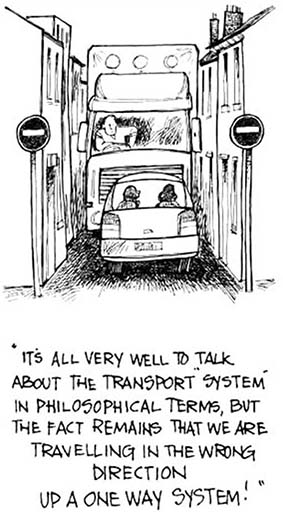4 Systems thinking
You can think about anything holistically. But when you apply holistic thinking to systems, you find that some ideas and techniques are particularly useful; these ideas and techniques constitute systems thinking. In other words, systems thinking is a specialised branch of holistic thinking. This section describes the main ideas and techniques of systems thinking.
Before I turn to them, there are a couple of general points I need to make.
First, don't be surprised that some of the examples and exercises that follow are not specifically about systems. As I said, holistic thinking isn't confined to systems, and sometimes it is easier to grasp the ideas and techniques in other contexts first.
Second, most people have an innate ability to think systemically, but, in spite of this, it can be quite difficult to do at first. It is worth persevering though because systems provides helpful ways of thinking about complex situations.
Third, many people think that what I call systems or systemic thinking is systematic thinking. Although both words are derived form the same Greek word for ‘a setting or placing together’, systematic means ‘having a plan or a method’ while systemic means ‘affecting entire body or organism’. So systematic thinking deals with orderly, methodical thinking and systemic thinking with the behaviour of wholes. Systematic thinking is more reductionist, since it reduces the overall activity to a set of discrete parts that only recognise the importance of the previous and next steps. If you iterate back to an earlier step or follow a different set of steps in response to external influences you are starting to become more holistic. Thus we can carry out a mixture of reductionist and holistic activities, and you can take a systematic approach to systems thinking, but they are not the same.

